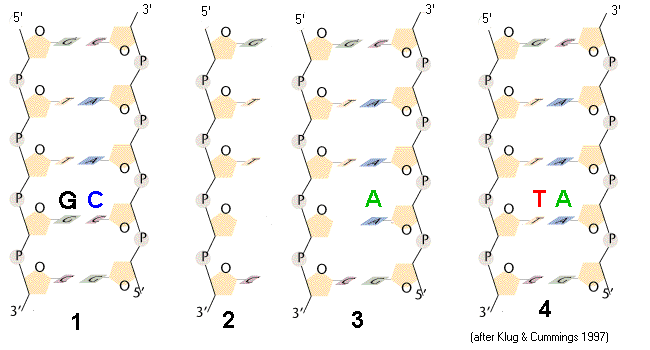
Depurination can produce transversion mutations

Depurination can produce transversion mutations
(1) In the
original intact dsDNA molecule,
G pairs with C. (2) In one ssDNA strand, hydration of the bond between
the base and the sugar leads to the loss of the G base (depurination), while leaving the
sugar-phosphate backbone intact. (3) When this strand is
replicated, DNAPol copies the 'blank' apurinic position by
incorporating a random base (in this example, A) in
the newly synthesized strand. (4) Replication of that
strand replaces the original G / C pair with a T / A pair. The result
is a G ![]() T
transversion mutation.
T
transversion mutation.
Depurination in intact dsDNA is ordinarily repaired in vivo by proof-reading polymerases. DNA in non-living forensic or paleontological material is not subject to repair, and the accumulation over time of apurinic sites prevents such 'ancient DNA' (aDNA) material from being correctly read by the polymerase chain reaction.
[HOMEWORK: Can random base incorporation at an apurinic site give rise to a transition mutation? Explain why or why not, using the above example].